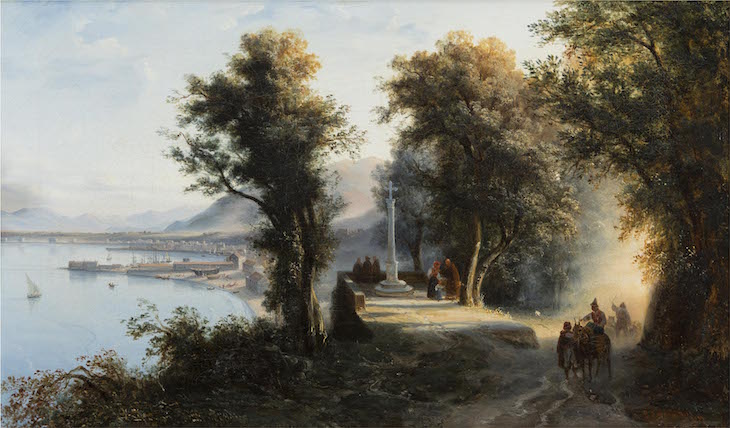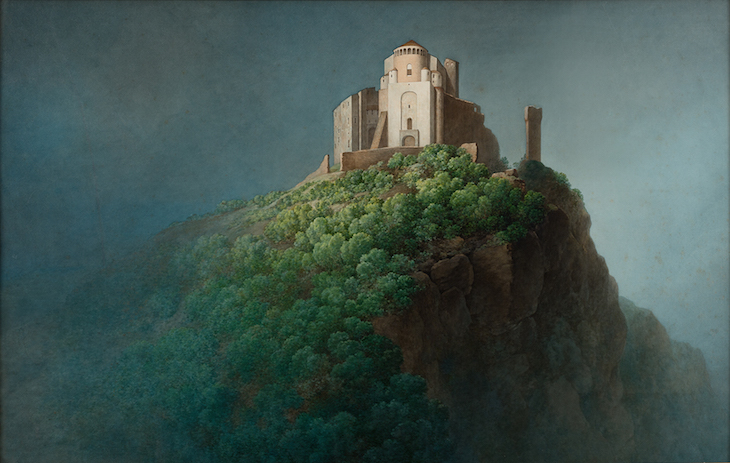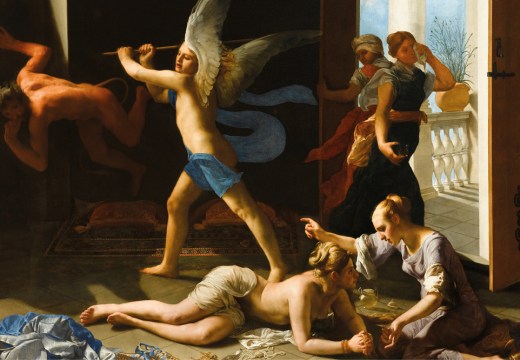With paintings by Francesco Hayez and Giuseppe Molteni alongside those of Friedrich and Turner, this exhibitions rethinks the Italian contribution to Romanticism and considers the place of the movement in Italian cultural life in the decades leading to unification in 1861. Find out more about ‘Romanticismo’ from the Gallerie d’Italia’s website.
Preview the exhibition below | See Apollo’s Picks of the Week here

Meditation on the History of Italy (1851), Francesco Hayez. Galleria d’Arte Moderna ‘Achille Forti’, Verona
In the first half of the 19th century, artists helped to create a sense of shared national identity across the disparate Italian states. Foremost among them was Francesco Hayez, known for his grand political allegories and searching portraits. In this painting, Meditation on the History of Italy, he combines the two. The young woman’s cross is inscribed with the dates of the Five Days of Milan in 1848 – an early episode in the first Italian war of independence.

View of Castellammare from Santa Maria di Pozzano (1833), Gabriele Smargiassi
Gabriele Smargiassi was connected with the School of Posillipo, a group of painters that sprung up in Naples at the end of the Napoleonic Wars. They sought to distance landscape painting from what was perceived as the formulaic tradition of the Neapolitan king’s court painter in favour of a more spontaneous approach. They painted en plein air, and favoured an unregimented palette. The exhibition considers how Italian Romantics were influenced by the broader movement across Europe; here, Smargiassi’s painting, illuminated with the orange glow that emanates from a hollow in the trees to the right, is reminiscent of Turner.

Street urchin with goat selling milk (1837), Giuseppi Molteni
Giuseppe Molteni’s reputation as a leading restorer of paintings led him into close contact with works in the Louvre and the British Museum, as well as private collections across Europe. He distilled these influences in his paintings, making his name with intensely observed portraits of richly costumed figures. From 1837, however, he applied these talents to genre painting, swapping high society for narrative vignettes that one contemporary critic saw as illustrating the moral beauty of everyday life.

The Veneration of St. Michael (1825–30), Giuseppe Pietro Bagetti. Musei Reali – Palazzo Reale
The Piedmontese painter and architect Giuseppe Pietro Bagetti is best known for his vedute and battle scenes, many of which were completed while he was working under the Napoleonic rulers, after moving to Paris in 1798. This landscape, completed ten years after his return to Turin at the end of the Napoleonic wars, is of a different species to his earlier works. With its solitary monastery set atop a vertiginous mountainside that looms from a gloomy sky, it evokes the sublimity of nature in a way that is typically Romantic.











![Masterpiece [Re]discovery 2022. Photo: Ben Fisher Photography, courtesy of Masterpiece London](http://www.apollo-magazine.com/wp-content/uploads/2022/07/MPL2022_4263.jpg)
How artists respond to disaster